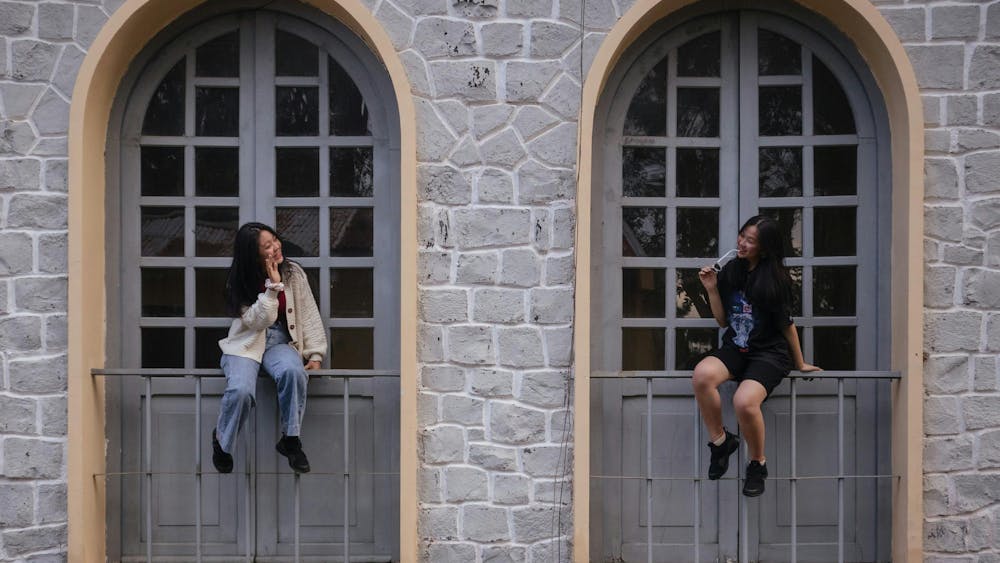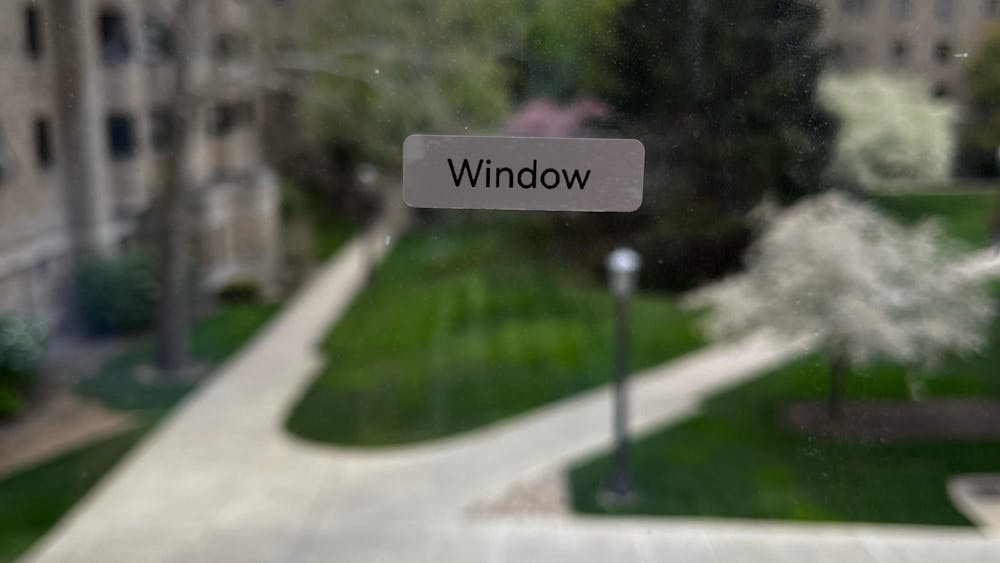At the heart of Notre Dame’s campus lies one of of the most iconic structures on any college campus in the world: the underwhelmingly-named Main Building, better known as the Golden Dome.
If I remember what my tour guide said when I was a prospective student three years ago, Main Building didn’t always had such an opulent top — it was originally crowned with a white dome. When it burned down in 1879, founder Fr. Edward Sorin claimed responsibility, saying he should have had a grander vision for an institution named after the mother of God.
The succeeding dome is covered with gold foil, which must be replaced every few years to make up for damage caused by weathering, including bird feces. Until that critical changing point, the gold shines and glimmers, even on cloudy days, and especially when it’s lit at night.
Everyone — whether they’re a new freshman, a “double-Domer,” an alum or a fan from an opposing football team — loves taking pictures of or with the Dome. If you’re a current student who has a Snapchat account, at least one of your friends has a picture of it on their story right at this very moment.
However, regardless of how picturesque the Dome looks from the outside, whenever I’m inside, I obsessively think about how the entire interior is fake.
Look at the crown molding on the walls, all the “woodwork.” When I say it’s “fake,” I don’t mean they used fake wood or plastic or some other substitute. No, it’s much worse; these elaborate carvings are all painted on. They’re not even three dimensional, unless you’re being annoyingly particular with the width added by the paint.
Surely, if Fr. Sorin thought the mother of God deserved to have a golden tribute, she must be worthy of actual woodwork that can be bought at any Home Depot, Lowes or even Walmart.
I’m fairly sure — or, at least, I’d really like to think — there’s a reasonable explanation for why a building that literally has a roof of gold decided to paint on wall fixtures, but I’m afraid I don’t know. Was the University really just that terrible at budgeting?
If the statue of Mary standing at the top of the Dome had been built at only 17 feet instead of 19, would the savings in gold foil have been enough to actually do the inside justice?
Are other buildings lying about their interiors and I’ve just never noticed?
If you’ve only made it far because you were hoping I would craft these observations into a sharp critique of the University — and there’s definitely at least a few ways to do that — I’m afraid I don’t have one. There’s not a lesson to be learned or a point to be drawn here; it’s just one of the little things about Notre Dame I don’t quite understand.













